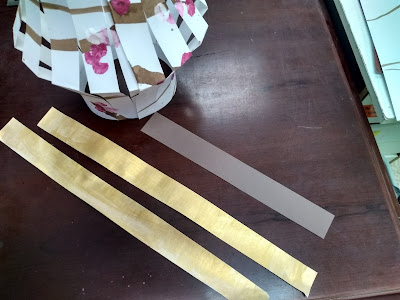Our fourth graders are studying Ancient China. Did you know that the most famous cherry blossom parks exist in China are due to Japan's brief occupation of China and later their gifting of cherry trees to them. We discussed this as a class and looked at images of Cherry Tree Parks.
Each student started with a 12x18 piece of white sulphite paper.
Our first step was to watercolor branches horizontally across our papers.
Next they dipped their brushes into magenta tempera paint and "splooshed" the paint randomly onto their tree branches. After that they dipped their brushes into white paint and "splooshed" the white paint on top of the magenta spots.
Day 2
The students folder their papers in half with the floral design on the inside. They then used their rulers as a guide to draw a line along the top edge of the long side of their papers. After that they used the ruler to draw vertical lines along the length of their papers. Finally they cut up the length of the vertical lines until the reached the horizontal line...no further
Now, they fold their papers back the other way with the design facing out. It's a little tricky with all of those slits in the paper.
Next, they wrapped their papers into a circle, overlapped the edges and stapled the top and bottom together.
At this point I had them squish their lanterns down and create a nice crease at the middle folds in the paper.
The students god a two inch wide piece of 18" long, white sulphite paper that had been painted with gold tempera. They cut their gold piece in half length wise with a wavy cut. They also got a 12x1.5" piece of brown construction paper for their handles.
They stapled the handle to the top of the lantern.
Now they wrapped their gold pieces around the openings of the top and bottom making sure to cover the staples and securely glued them on.
This was the finished lantern. We plan on hanging them from the ceiling in the elementary hallway. Can't wait to see them all displayed.

















 Woman in the Night
Woman in the Night